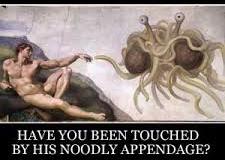 More from Orson Scott Card this week, again looking at something which could be considered fairly basic but actually deserves quite a lot of thought. Where do you begin and end your story? Just saying ‘start at the beginning’ doesn’t work because, in OSC’s terms, the myth of a story is far longer than the text. Do you start with your detective protagonist finding the body? His argument with his boss that morning? His divorce the year before? Do you start with his childhood, which made him the man he is today? His birth? His parents meeting?
More from Orson Scott Card this week, again looking at something which could be considered fairly basic but actually deserves quite a lot of thought. Where do you begin and end your story? Just saying ‘start at the beginning’ doesn’t work because, in OSC’s terms, the myth of a story is far longer than the text. Do you start with your detective protagonist finding the body? His argument with his boss that morning? His divorce the year before? Do you start with his childhood, which made him the man he is today? His birth? His parents meeting?
The myth of the story is actually a long network of cause and effect which begins long before the story and continues long afterwards. You, however, must choose a point where the text begins and a point where it ends. ~ OSC, How to write Science Fiction & Fantasy
The Beginning of the End
The two are, of course, intrinsically linked and not just because they are both key events within the same story. The way you structure the beginning dictates to a greater extent what ending your audience are geared to anticipate. It also dictates what the focus of the story is. If you start with the detective protagonist’s parents getting married, for example, then the murder case which is the main text of your book is going to seem out of place and will take a while to get to.
The beginning must make the audience ask questions that are answered by the story’s ending so that, when they reach that ending, they recognize that the story is over. ~OSC, HtwSF&F
It comes back, really, to starting your story as close to the immediate action as possible but not so close that we don’t care about the people when bullet start flying towards them. If background from earlier in the myth is relevant to the text, you can bring it in gradually as flashbacks, explanations, insights, and so on. You don’t have to tell the entire story in a linear fashion. Writers have the power of time travel. We’re awesome, that way.
The MICE Quotient
Okay, so beginnings set up the expectations of endings. But that still doesn’t help decide what the right beginning is, or where it is. OSC has a system for defining this – something he calls the MICE Quotient. MICE stands for the four elements that define structure in a story: Milieu, Idea, Character, Event. Depending on the kind of story you’re telling, a different one of these will be the dominant factor.
- MILIEU: the planet / society / family. The world setting, in essence. Milieu stories almost always follow the same structure: an observer, who sees things as his audience would see them, goes to strange places, is transformed by them, and comes home. The story starts when he reaches the strange lands and ends when he leaves (or decides not to).
- IDEA: essentially, this is a story about characters finding out new information. It starts by raising a question (e.g. who killed Jimmy? Why did this civilisation decline? Is there life on Mars?), and finishes when the question is answered.
- CHARACTER: the transformation of a character, where that transformation is the primary thread of the story rather than a consequence or subplot. (OSC says that good characterization is essential for Character stories but not for the others – I disagree with him there.) The story begins when the main character begins the process of change, either because they’re forced to or because they are unhappy with their current role, and ends when they settle into a new role or become resigned to the old one. In a Character story, according to OSC, a lot of the plot will come from people resisting that attempt to change.
- EVENT: something is wrong and must be dealt with. The story ends when it’s been fixed / gone catastrophically badly and all hope of fixing it is lost. It does not, however, start when the thing goes wrong in the first place. The starting point is when ‘the character whose actions are most crucial to establishing the new order becomes involved in the struggle’. As an example, Lord of the Rings doesn’t start when Sauron comes to power, or even when the ring is found by Bilbo. It starts when Frodo gets involved. Most fantasy uses this structure.
It’s important to repeat that a story isn’t just one of these – there’s plenty of scope for using all four types of plot, but one will dominate and that should help you structure accordingly. In particular, it should give you an identification for the start and end points, to set up the right expectations in your readers. Make sure you identify which that primary thread is. And if your story isn’t working? OSC suggests that you try rewriting it with one of the other MICE options as the primary focus. It will probably change the entire structure.
For more on using the MICE Quotient throughout the story, click here for an entertaining and enlightening explanation by Writing Excuses podcast, or here for a written review.





